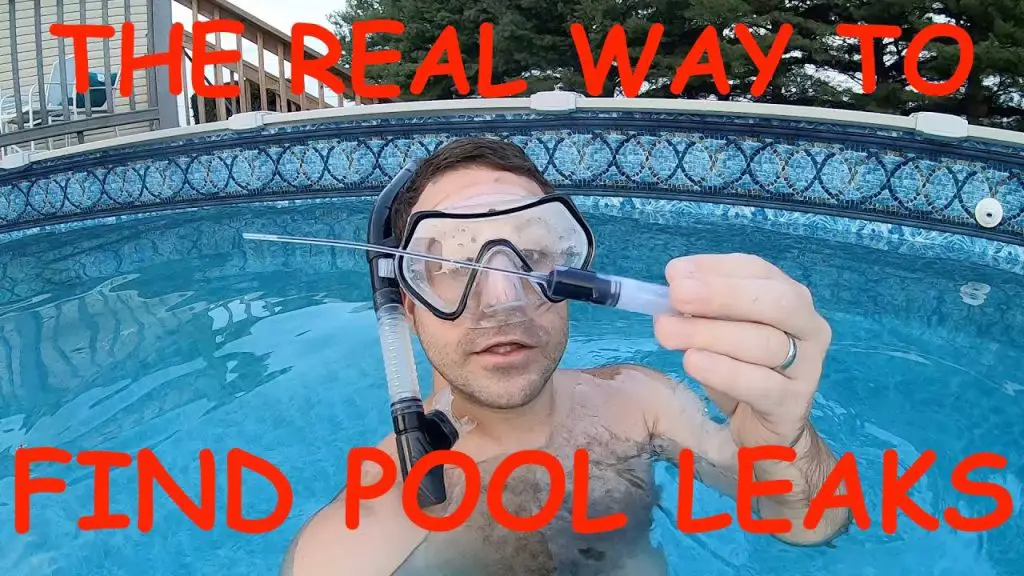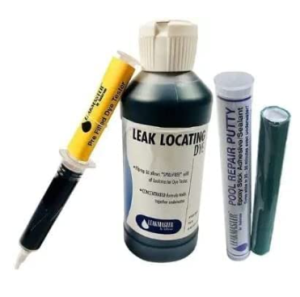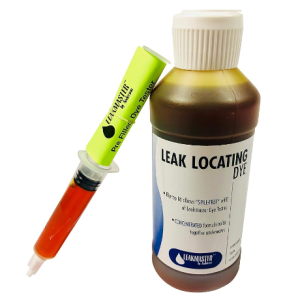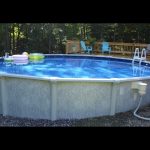If you have a pool, you know how important it is to keep the liner in good condition. A hole in the pool liner can lead to water leakage and potential damage to the pool structure. Finding and fixing a hole in the pool liner is essential to maintain the pool’s functionality and aesthetic appeal. In this article, we will discuss the step-by-step process of finding a hole in a pool liner and the best ways to repair it.
Pool Liner Leak Detection Dye Kit for Leakmaster
Step 1: Visual Inspection
The first step in finding a hole in a pool liner is to conduct a visual inspection. Start by carefully examining the entire surface of the pool liner. Look for any signs of damage, such as tears, punctures, or worn-out areas. Pay close attention to the seams and corners, as these are common areas where holes may develop. If you notice any suspicious areas, mark them with a waterproof marker or tape for further examination.
Step 2: Water Loss Test
After the visual inspection, it’s time to perform a water loss test. Fill the pool to its normal operating level and mark the waterline. Turn off the filtration system and note the water level after 24 hours. If there is a significant drop in the water level, it indicates a possible leak in the pool liner. In this case, the next step is to pinpoint the exact location of the hole.
Step 3: Dye Test
Pool Liner Leak Detection Dye Kit
A dye test is an effective method to identify the exact location of a hole in the pool liner. Add a small amount of food coloring or a pool leak detection dye into a squeeze bottle and disperse it around the suspected areas. Watch closely for any color being drawn into the hole, indicating the precise spot where the pool liner is compromised. Make sure to conduct this test on a calm day to prevent the wind from affecting the results.
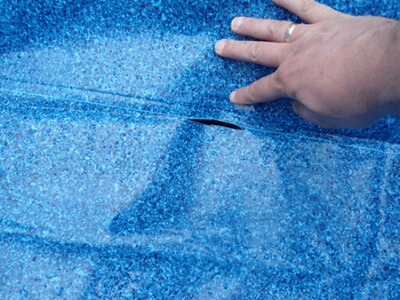
Credit: www.alltrades.vegas
Step 4: Underwater Inspection
If the dye test doesn’t reveal the location of the hole, the next step is to perform an underwater inspection. Use a pair of goggles or a snorkel mask to carefully examine the pool liner surface underwater. Look for any signs of bubbling or water movement, as this can indicate the presence of a hole. Take note of any suspicious areas and mark them for further investigation.
Step 5: Pressure Test
If the hole is not easily identifiable through visual or dye tests, a pressure test can be conducted to locate the leak. Close all the pool’s outlets and add pressure to the plumbing lines. Use a mixture of soap and water to spray around the pool liner and observe for any bubbles forming. The presence of bubbles will indicate the exact location of the hole in the pool liner.
Step 6: Repairing the Hole
Once the hole in the pool liner is identified, it’s crucial to repair it promptly to prevent further damage. There are several methods for repairing a pool liner, depending on the size and location of the hole. For small holes and tears, a patch kit specifically designed for pool liners can be used to provide a durable and waterproof seal. Larger holes may require professional repair or even liner replacement, depending on the extent of the damage.
Preventing Future Leaks
After repairing the hole in the pool liner, it’s essential to take preventive measures to avoid future leaks. Regularly inspect the pool liner for any signs of wear and tear, especially after severe weather conditions or heavy pool usage. Additionally, be cautious when using sharp objects or abrasive cleaning tools near the pool, as they can cause damage to the liner. Proper maintenance and care will prolong the lifespan of the pool liner and ensure a trouble-free swimming experience.

Credit: blog.aquamanleakdetection.com
Conclusion
Finding a hole in a pool liner may seem like a daunting task, but with the right approach and techniques, it can be effectively identified and repaired. Regular maintenance and careful inspection are key to preserving the integrity of the pool liner and preventing water leakage. By following the step-by-step process outlined in this article, you can ensure that your pool liner remains in excellent condition, providing years of enjoyment and relaxation for you and your family.


